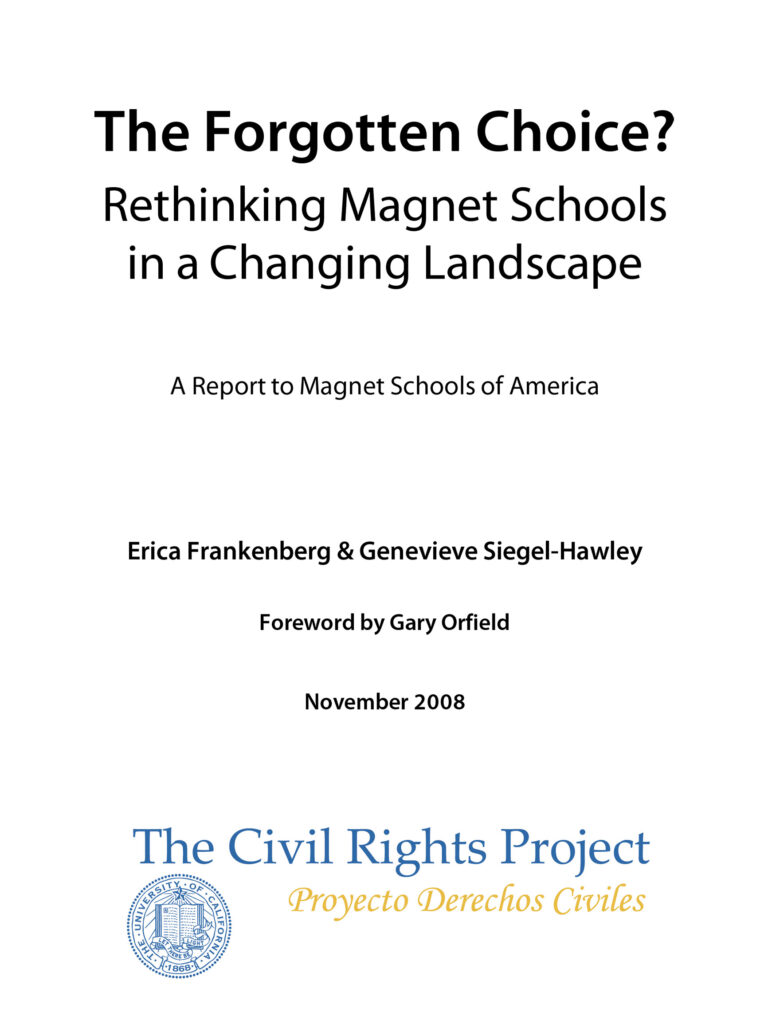Introduction
There has been intense discussion of choice in American schools for decades. In this year’s presidential campaign, the candidates of both major parties promised to increase support for one form of choice—charter schools. Yet, almost nothing was said about a system of magnet schools that enrolls more than twice as many students in “schools of choice,” a policy that has produced many extremely popular and successful schools. Further, these magnet schools were designed to break down racial barriers and foster the voluntary commitment of students, parents and teachers to integrated schools offering special educational opportunities that, by their nature, could not be offered in comprehensive neighborhood schools.
The magnet school system flourished in the l970s and l980s and then lost public attention as the courts began to dismantle desegregation plans. Funds were then pumped into the expansion of charter schools, which are similar in some very important ways but differ in others. Though the story of magnet schools is a complex one, I believe that it has many positive lessons that deserve attention in the development of new federal policies, particularly as it offers important implications for future policies about charters, the new pilot schools, and other choice mechanisms. Magnet schools themselves also deserve increased support.
Large-scale choice first became part of American education when schools in the South adopted “freedom of choice” plans in the early l960s, hoping to avoid mandatory desegregation. Those plans left the system of segregation so intact that the Supreme Court later held they were inadequate in remedying illegal segregation.1 After urban school districts were required to desegregate in the l970s, pioneering educators in Milwaukee, Cincinnati, Buffalo, and other communities invented ways to create educationally distinctive schools that worked to produce significant desegregation. This approach, supported by both liberals and conservatives, received substantial funding to expand similar models. Importantly, it showed positive impacts on support for public schools, while at the same time increasing desegregation through choice, important new educational options for families, and academic gains. Senator John Glenn sponsored new federal legislation in 1976 to grant funds to create more magnet schools, which passed with widespread support.2 The federal Magnet School Assistance Program was very popular with school districts across the country, even with its requirements for desegregation policies. At their best, magnet schools offered special curricular offerings along with the following: integrated staffs of teachers drawn by interest, strengthened by training and curricular materials; very good parent information; free transportation to interested students; desegregation standards for student body composition; outreach to eligible students; and selection methods that relied on student interest rather than screening tests. Magnet schools provided choice with the three essential civil rights policies — information, open access, and desegregation standards — along with truly distinctive educational offerings. Some of these schools became extraordinarily popular.
Magnet schools deserve attention now especially since many are changing and sometimes moving away from their founding principles as a result of recent policy shifts and the Supreme Court’s 2007 decision that limited the tools for voluntary integration.
In compliance with the UC Open Access Policy, this report has been made available on eScholarship:
